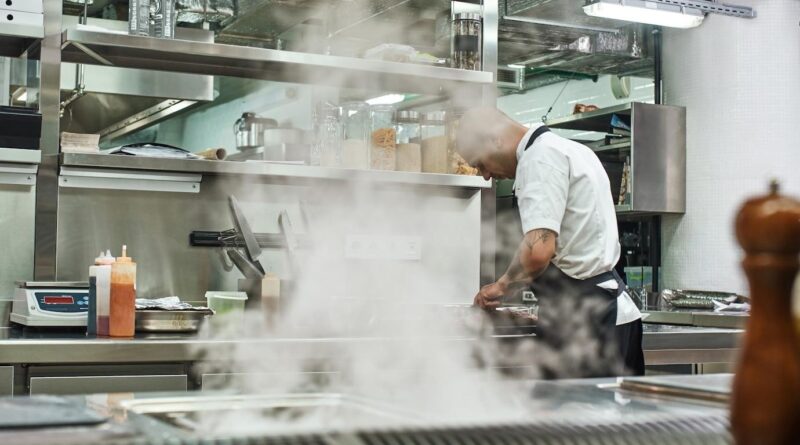How to Fix an Oven That’s Too Hot
When your oven gets too hot, it’s more than just a recipe disaster waiting to happen—it could indicate a more serious issue with the appliance itself. Overheating ovens can burn your food, damage the unit, or, in the worst-case scenario, cause a fire hazard. Knowing how to fix an oven that’s too hot is crucial for maintaining a safe and functional kitchen.
This guide will walk you through the common reasons your oven might be overheating and provide solutions you can implement before considering oven repair services. From faulty temperature sensors to calibration issues, you’ll be equipped to diagnose and solve the problem.
Common Causes of an Overheating Oven
Before diving into specific fixes, it’s important to understand why your oven might be overheating. There are several potential causes for this issue:
Faulty Thermostat or Temperature Sensor The oven’s thermostat or temperature sensor is responsible for regulating heat. If these parts malfunction, the oven might heat up more than intended, causing your food to burn. A faulty sensor can misread the internal temperature, leading the heating elements to stay on longer than they should.
Improper Calibration Ovens come calibrated from the manufacturer, but over time, their accuracy can shift. Improper calibration may cause the oven to consistently run hotter than the temperature set on the dial. This can be especially frustrating if you’re trying to bake or cook delicate items that require precise temperatures.
Broken Heating Elements Electric ovens rely on heating elements to reach the desired temperature. If the heating element is damaged or malfunctioning, it can overheat the oven or cause uneven heat distribution. In some cases, this may even result in certain areas of your oven being much hotter than others.
Blocked Ventilation For ovens to regulate temperature effectively, air must circulate freely. Blocked ventilation can cause heat to build up inside the oven, making it run hotter than the set temperature. Whether it’s debris in the oven vents or poor kitchen ventilation, airflow issues are a common cause of overheating.
Malfunctioning Control Board The oven’s control board manages all of the oven’s settings, including temperature control. If the control board malfunctions, it can lead to improper temperature regulation, causing your oven to become too hot.
How to Troubleshoot and Fix an Overheating Oven
Now that you know the possible causes, let’s explore the steps you can take to diagnose and fix your overheated oven. In many cases, these simple troubleshooting tips can save you from calling an oven repair technician.
1. Test the Temperature Accuracy
The first step in fixing an oven that’s too hot is to verify whether the temperature on the display matches the actual heat inside. To do this:
- Place an oven thermometer on the middle rack.
- Preheat the oven to 350°F (or a similar moderate temperature).
- After the oven beeps or indicates it has reached the set temperature, check the thermometer.
- If the thermometer reads higher than the set temperature, your oven is overheating.
Solution: If the oven is off by more than 25°F, you may need to recalibrate the temperature settings (more on that below). This discrepancy often indicates that either the thermostat or temperature sensor is malfunctioning.
2. Check the Temperature Sensor
A faulty temperature sensor is one of the most common reasons for overheating. Here’s how to check the sensor:
- Locate the temperature sensor inside your oven, usually at the back.
- Inspect it visually for any obvious signs of damage, such as corrosion or cracks.
- Use a multimeter to test the sensor’s resistance. Refer to your oven’s manual for the correct resistance range.
Solution: If the sensor is damaged or has an incorrect resistance reading, it will need to be replaced. Temperature sensors are relatively inexpensive and easy to replace in most models.
3. Recalibrate the Oven
If your oven’s temperature accuracy is off, recalibration may help bring it back to its correct settings. Here’s how to recalibrate your oven:
- Refer to your oven’s manual for specific recalibration instructions. Most modern ovens allow you to adjust the temperature up or down by 5-10 degrees.
- Use the oven’s settings menu or control panel to recalibrate the temperature.
- Test the oven again with a thermometer after recalibration to ensure accuracy.
Solution: After recalibration, your oven should closely match the set temperature. If the issue persists, it may be a deeper electrical issue, and you’ll need to contact a professional for oven repair.
4. Inspect the Heating Elements
For electric ovens, the heating elements (both the top and bottom ones) are crucial for distributing heat evenly. If these elements are malfunctioning or damaged, they can cause the oven to overheat.
- Turn off the oven and unplug it from the power source.
- Inspect both the top (broil) and bottom (bake) heating elements for any signs of visible damage such as burns, cracks, or breaks.
- Test the heating elements with a multimeter for continuity.
Solution: If the heating elements are damaged or fail the continuity test, they need to be replaced. Replacement parts can often be purchased from the manufacturer or an appliance parts retailer.
5. Ensure Proper Ventilation
Blocked or obstructed oven vents can cause the temperature to spike, as the hot air has nowhere to escape. Here’s how to address ventilation issues:
- Check that the oven vents inside the appliance are free from debris or blockages.
- Ensure that there’s adequate space around the oven for air to circulate, especially if the oven is built-in or positioned against a wall.
Solution: Cleaning the oven vents and improving airflow should help reduce overheating. Regular maintenance of vents can prevent overheating in the future.
6. Reset the Control Board
In modern ovens, the control board is responsible for regulating all oven functions, including temperature. A malfunctioning control board can cause temperature spikes. You can attempt to reset the control board as a simple fix.
- Turn off the oven and unplug it from the power outlet.
- Wait for about five minutes to allow the control board to reset.
- Plug the oven back in and test it by preheating to see if the temperature issue persists.
Solution: If resetting the control board doesn’t resolve the issue, you may need to replace the board, which requires professional assistance from an oven repair technician.
Conclusion
Dealing with an oven that’s too hot can be frustrating, but by identifying the root cause and applying the appropriate fixes, you can get your appliance back to optimal working condition. Whether it’s recalibrating the temperature or replacing faulty components, many issues can be resolved with a bit of troubleshooting. However, if the problem persists, don’t hesitate to seek professional oven repair services to ensure both safety and functionality.




